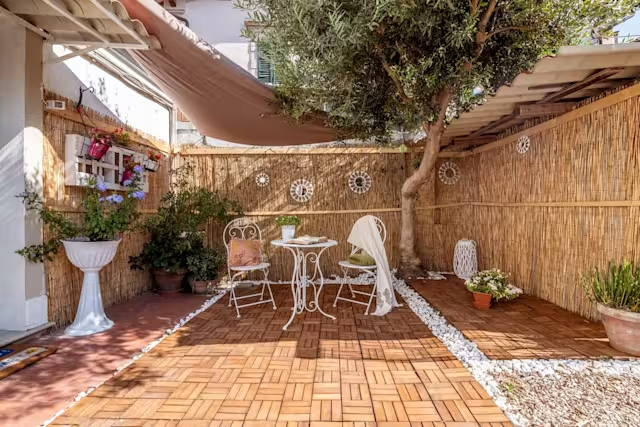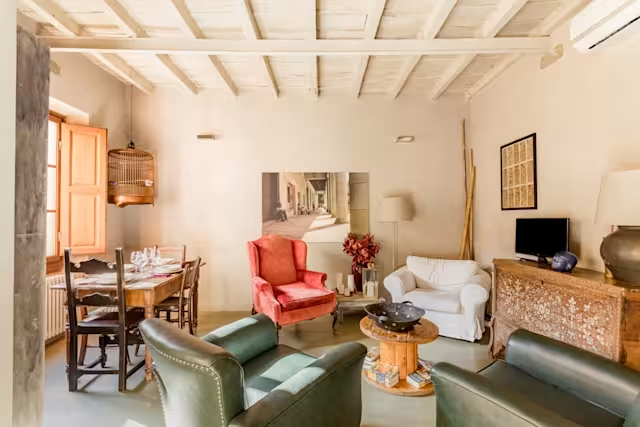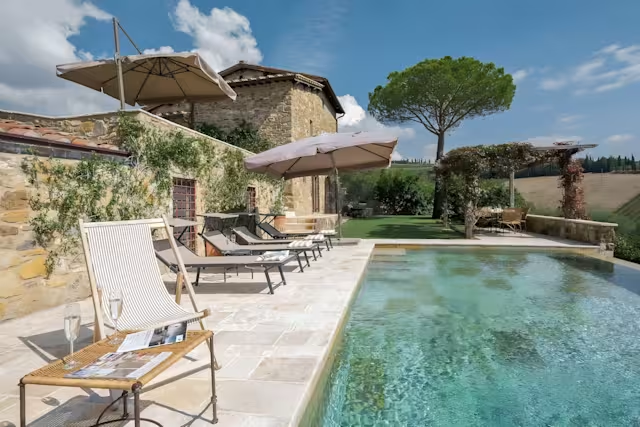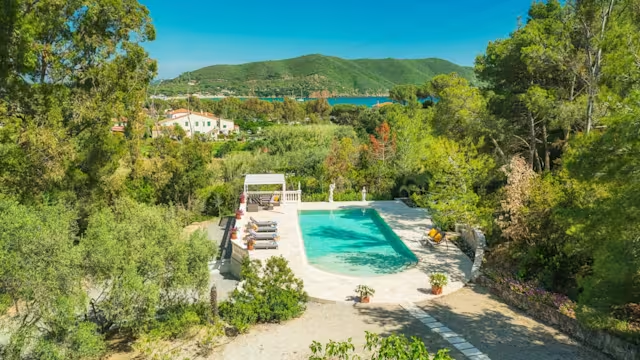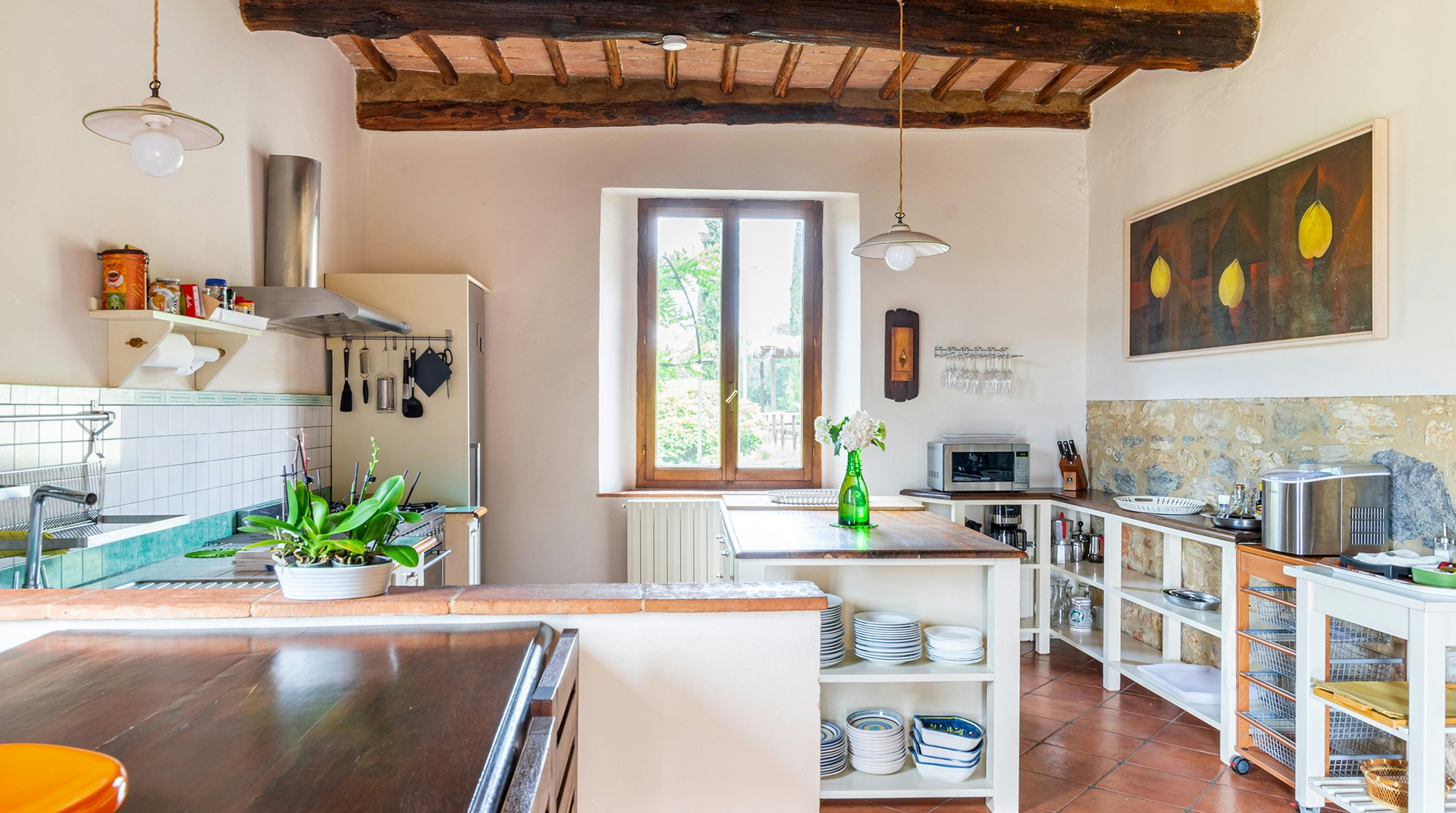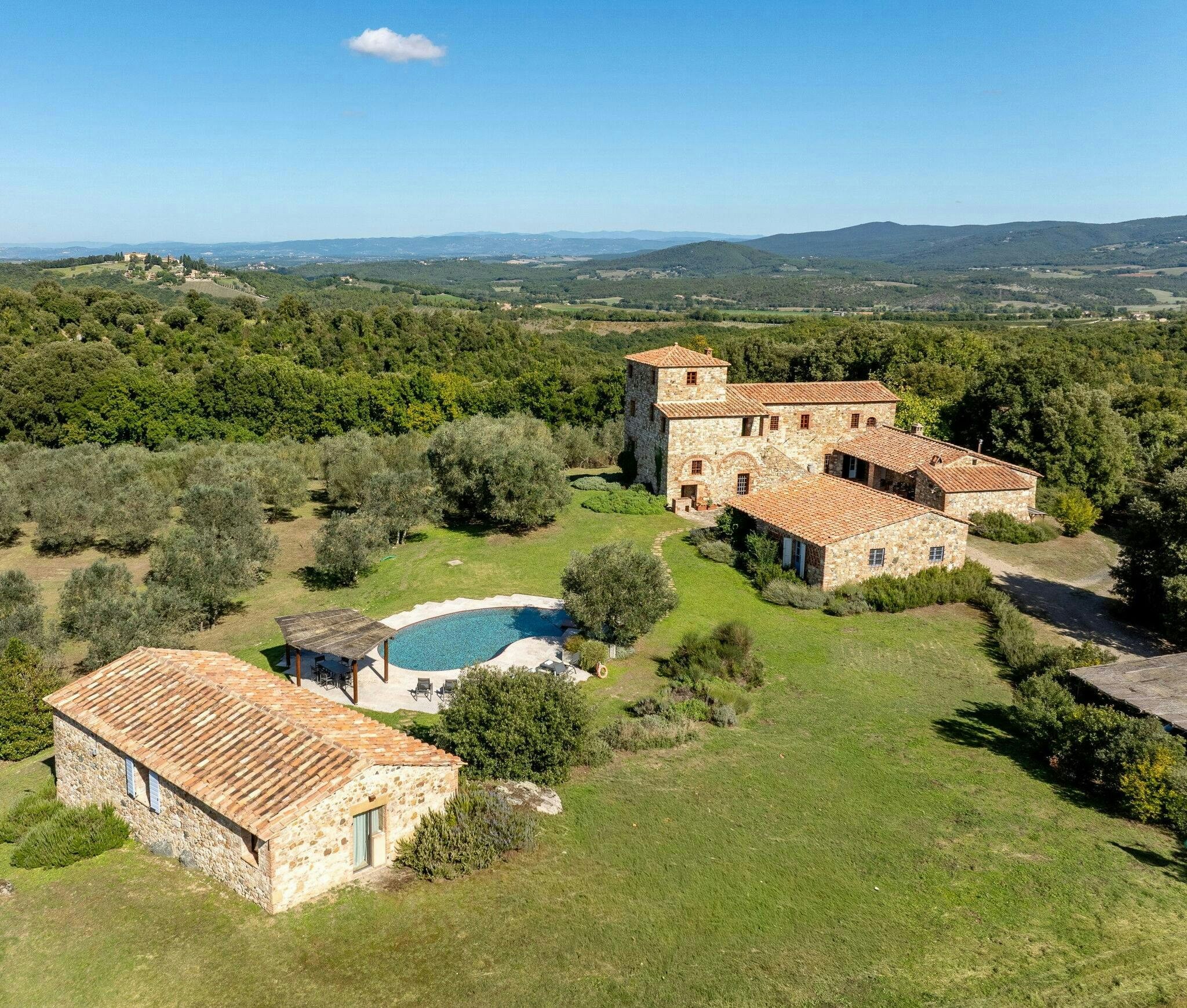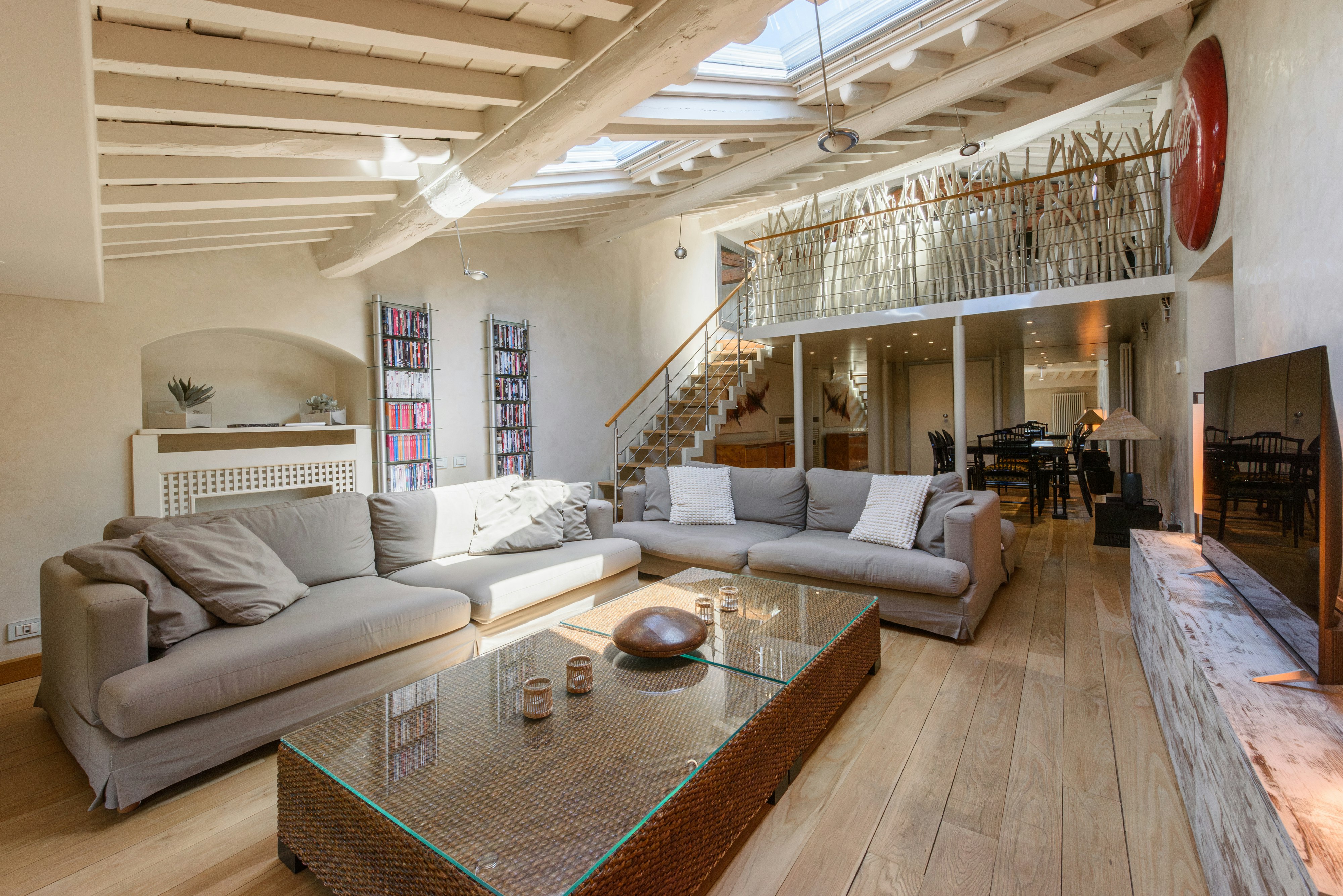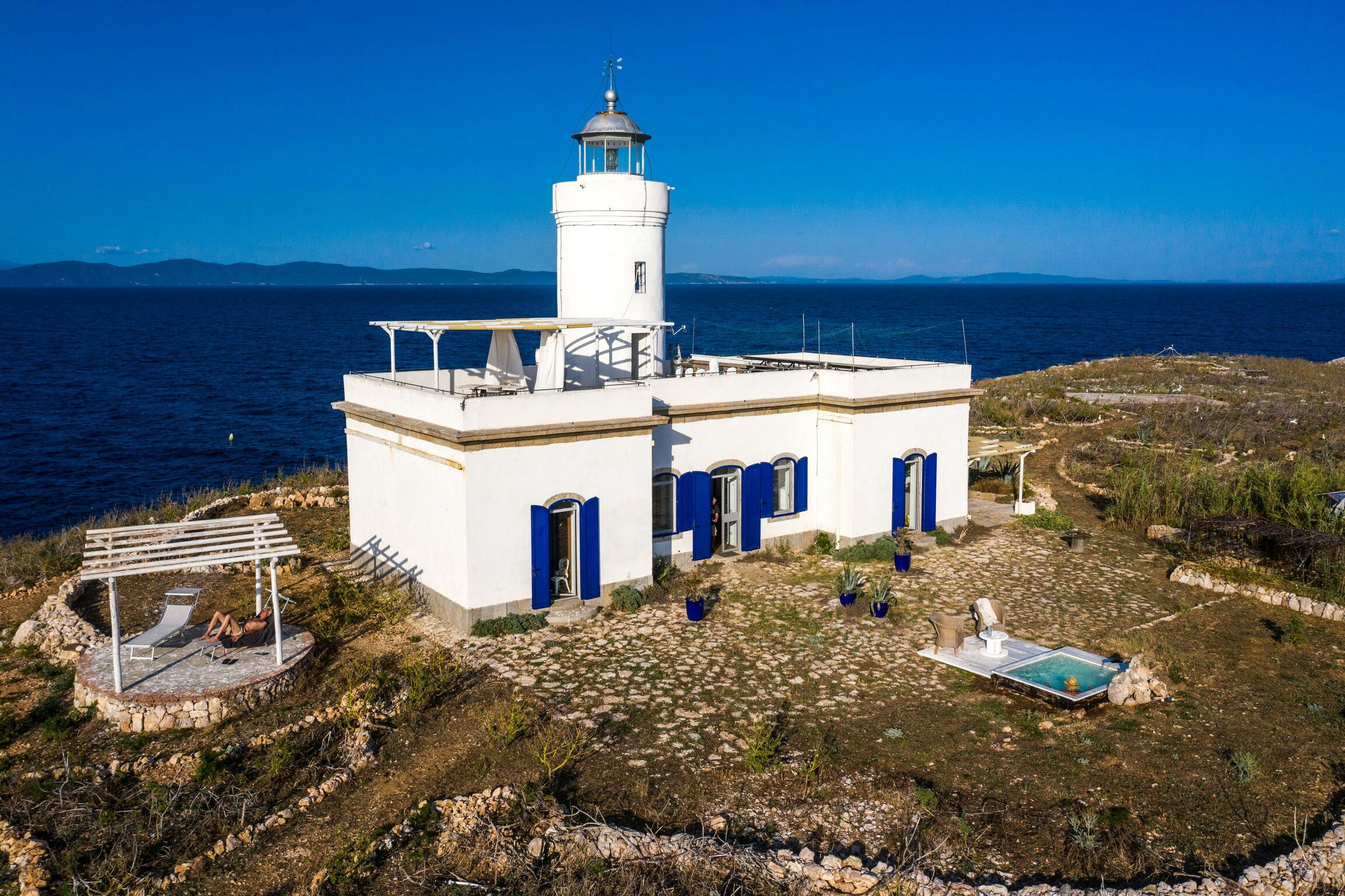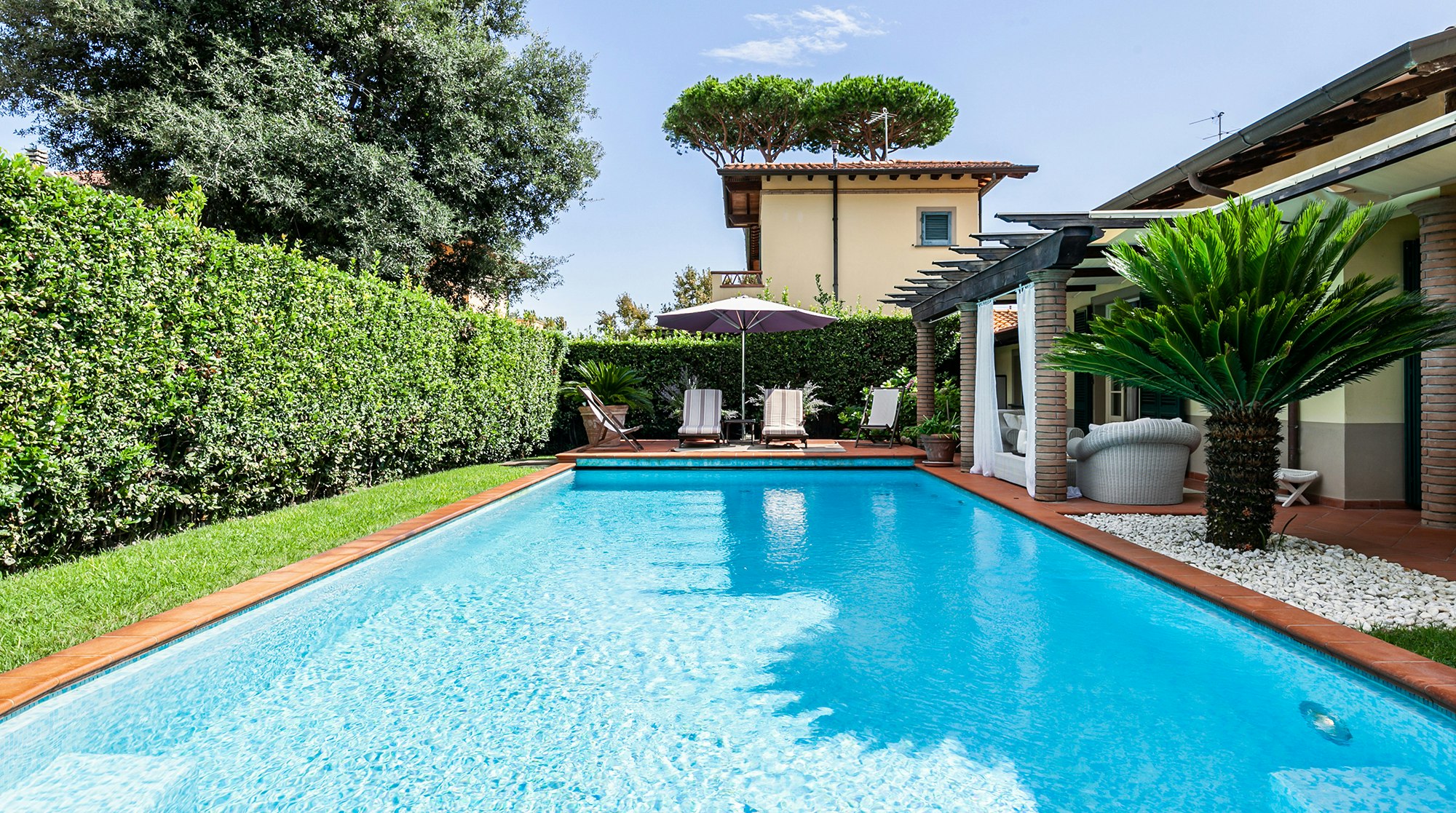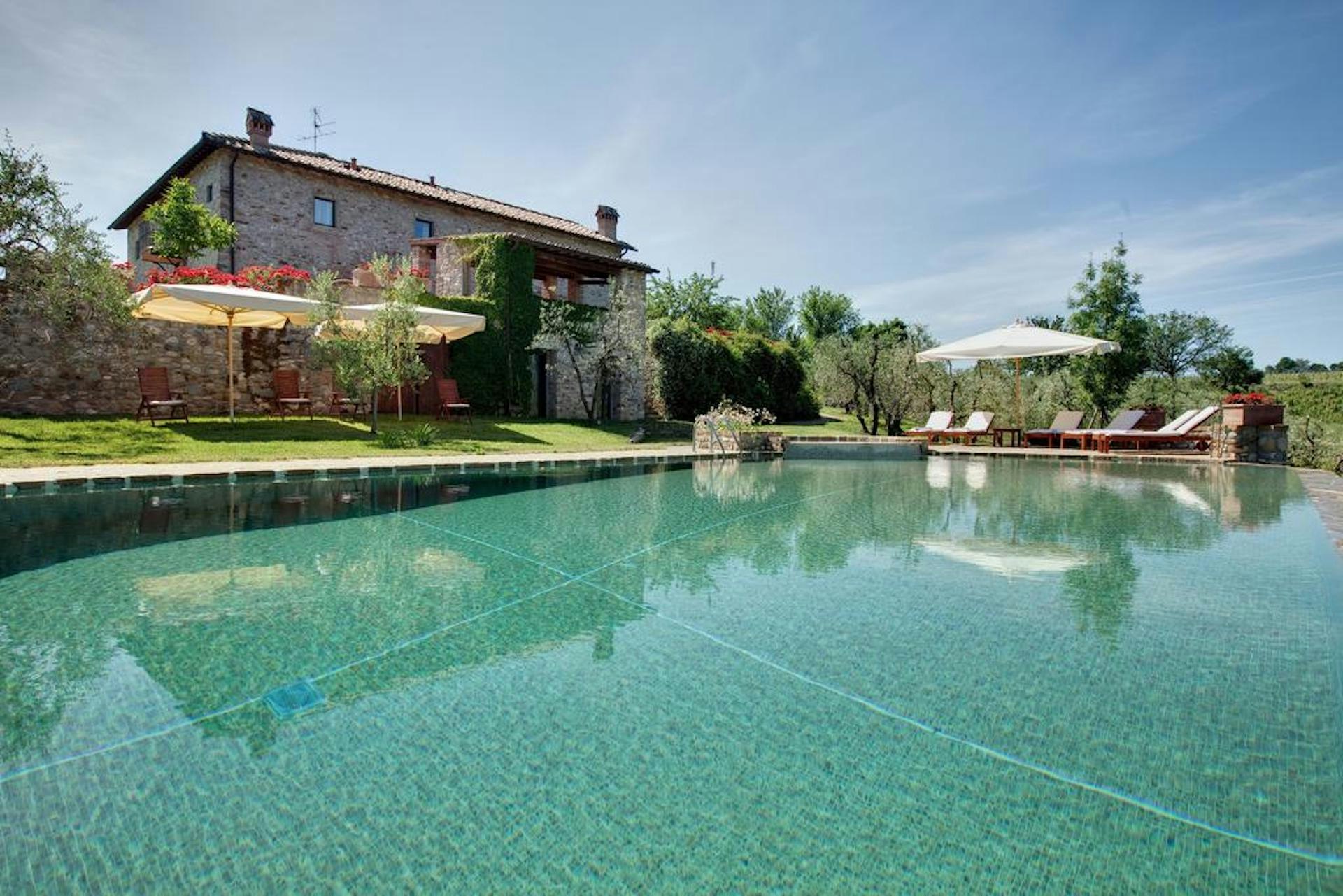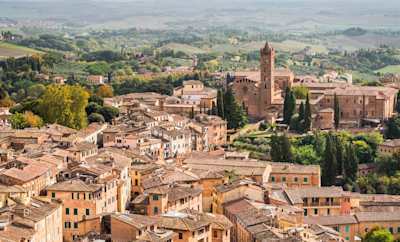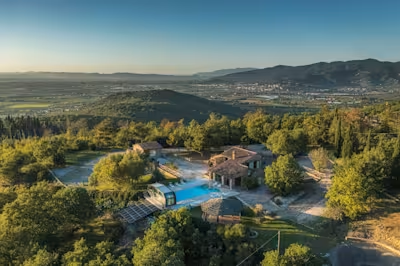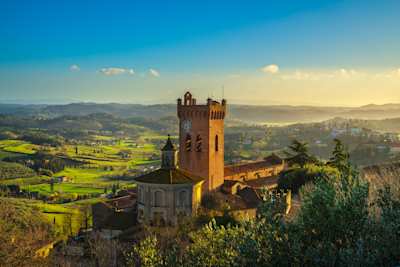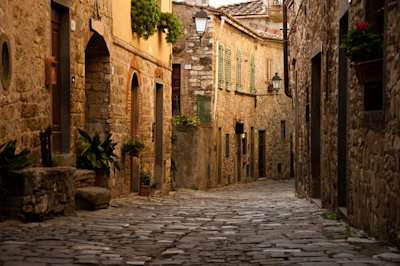Where to Stay in Tuscany
A trip through vineyards, beaches and sweeping hills
~
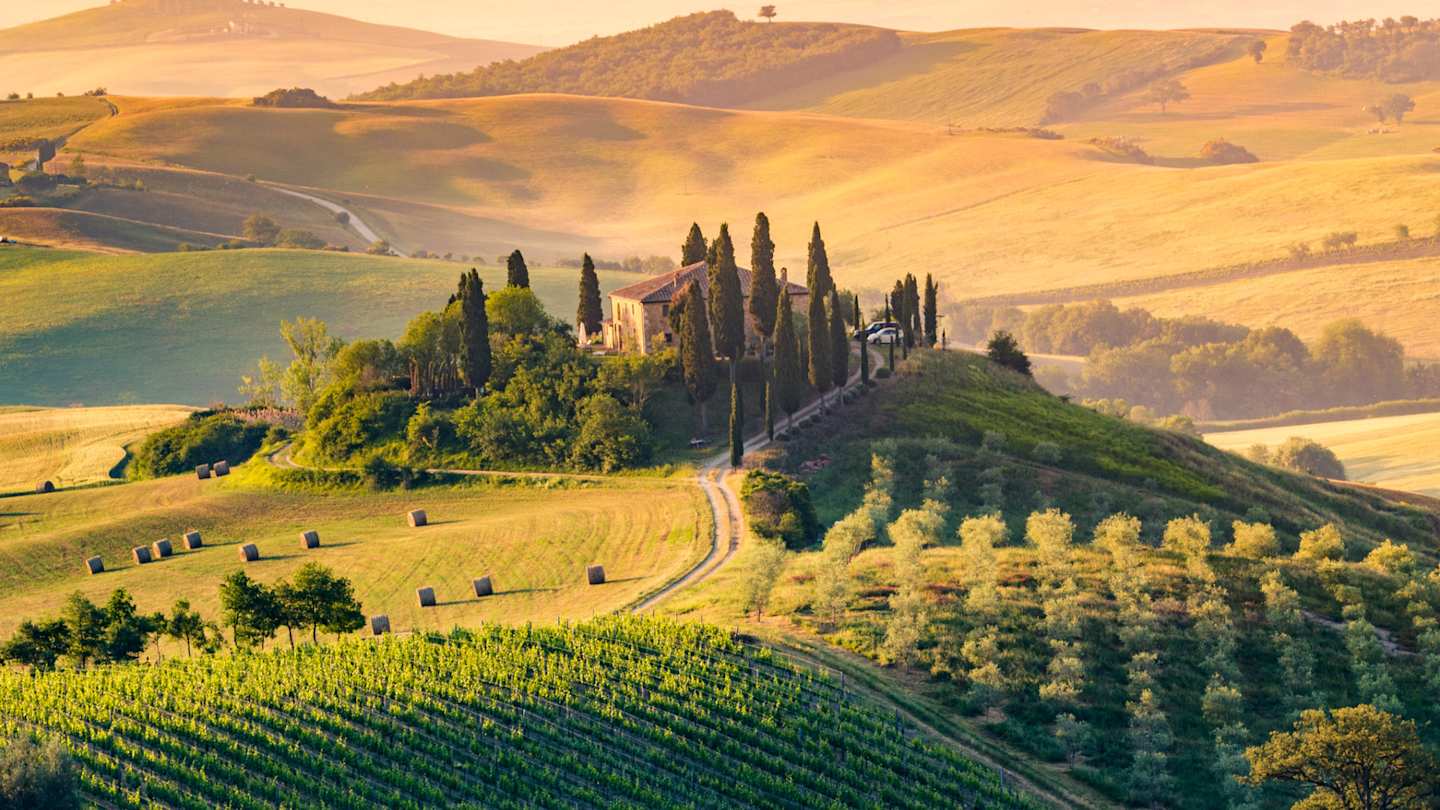
About as diverse as it gets in Europe, Tuscany is an amalgamation of spectacular scenery. Topped only by Venice, it's Italy’s second-most visited region, and it’s not hard to see why. One day, you’ll be traipsing up the Monti dell'Uccellina by the coast and relaxing on the beaches, and on the next, you’ll be rummaging through some of the world’s finest art galleries in Pisa and Florence. Historic vestiges bring us back thousands of years in these wonderful cities, where you can practice your stance for the ‘holding up the Leaning Tower of Pisa’ pose and marvel at the architecture of the Santa Maria del Fiore Cathedral. Being the fifth largest region in Italy, there are many options on the table (next to the wine and olives). Fortunately for you, here at Plum Guide, our experts have whittled the list down to save you a few hours of brain-mulching research online. We’re good at that stuff, you know. Read on for the definitive list of where to stay in Tuscany, and fret no more.
Pisa
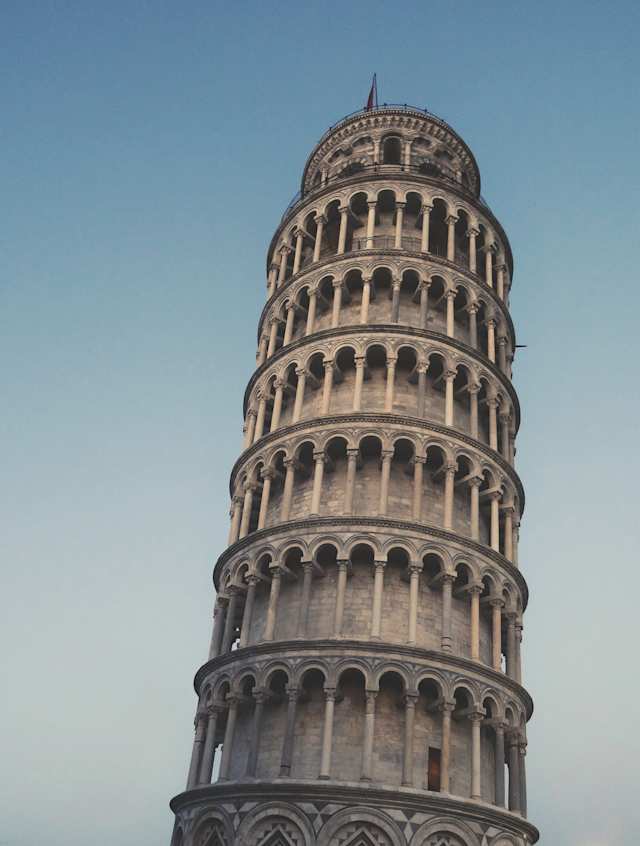
The leaning tower of Pisa, Tuscany, Italy
Let’s get this one out of the way nice and early. If you’re looking at where to stay in Tuscany, we have no doubt Pisa has cropped up countless times in your research. How could it not? Home to the iconic Leaning Tower (yes, bring your camera), the city has plenty to explore. There’s the neighbouring Cattedrale di Pisa and Pisa Baptistry (both marvels in their own right), as well as the Museo Nazionale (home to stunning artefacts, sculptures and paintings that go as far back as the 12th century).
When it comes to staying, there are a few great options. Santa Maria is a pedestrian-friendly area on the north of the River Arno, where you’ll find the historic city centre. Meanwhile, across the river in Sant’Antonio you’ll find a more relaxed atmosphere—still only 20 minutes walk from the main attractions but not as prone to overcrowding, as well as the added benefit of the nearby train station that links very well to the rest of Tuscany. If you’re looking for bars and nightlife, San Francesco is your best bet.
Monti dell'Uccellina
Tuscany’s stretch of mountains along the coast are as surprising as they are beautiful. That’s because the image we have in our minds of Tuscany comprises a rural inland flurry of vineyards (we’ll get there, don’t worry). The mountains of Monti dell'Uccellina spread out to the coast, featuring marshes and coastal plains: enough space and nature for you to hike for hours and complain of aching limbs. Snap photos of the vistas of the sea, and enjoy a picnic in the forest. Look up to the skies for a wide variety of birdlife.
Florence
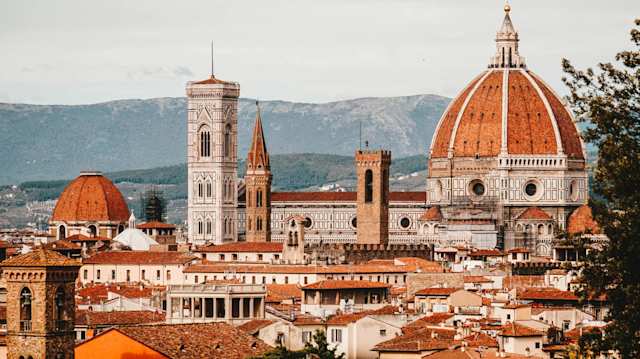
Skyline view over Florence, with rooftops and the Duomo, Italy
Florence is one of the best places to stay in the whole of Italy, let alone in Tuscany. Even its name is beautiful. That just about sums up Florence, a city paved with gold (well, not really gold - but lovely things). The list of notable exports from this impressive city read like a who’s who of Italian heritage: Michelangelo, Galileo Galilei, Leonardo da Vinci and Guccio Gucci, to name a few. Speaking of heritage, the city is renowned for its beautiful architecture that dates back to its golden era during the Renaissance. It’s simply not to be missed.
The historic centre, Duomo, is a great option, with most major attractions within easy walking distance. If you’re looking for vibrant nightlife, consider Santa Croce, and if it’s a family-friendly vacation, the residential area of Santa Maria Novella should do the trick. Santo Spirito is one for the foodies with a healthy mix of cafes, bars, wineries and fine dining restaurants.
Pienza
Nestled on top of a hill overlooking the iconic Val d’Orcia (Orcia Valley), there can be few towns that embody Tuscany better than Pienza. Renaissance history, culture and architecture are everywhere to see, with landmarks including the serene Chapel Vitaleta, Pienza Cathedral and the Renaissance palace Palazzo Piccolomini. As for the surrounding landscape? You may want to Google that just for a moment or two. This is the Tuscany you’ve seen adorned across travel mags, postcards and desktop backgrounds. Most likely, it’s the Tuscany you’ve been dreaming of, a place where you can walk among sweeping, golden fields of wheat dotted with the occasional olive tree. Bliss.
Chianti
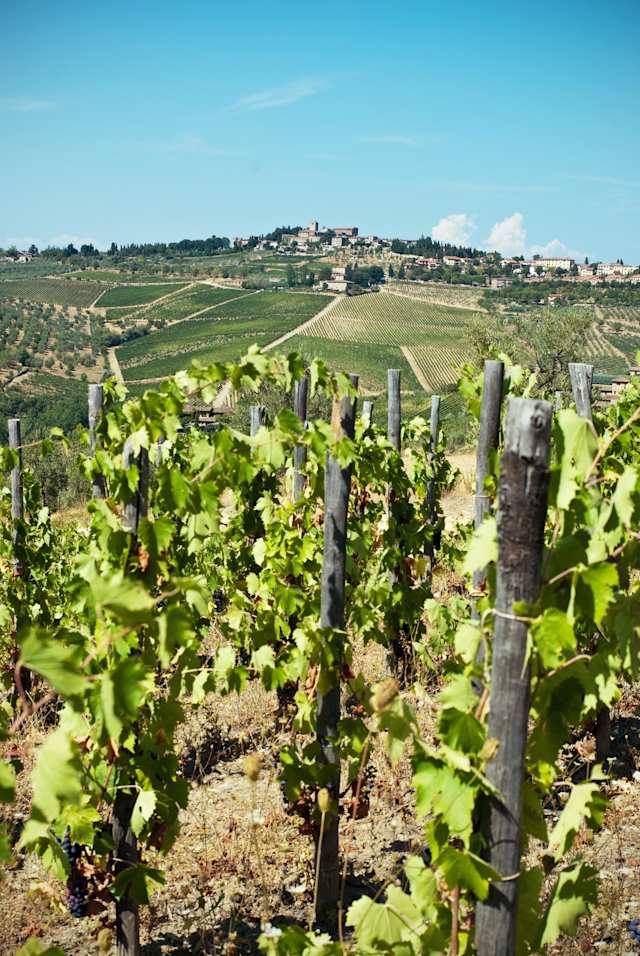
Vineyard in Chianti, Tuscany
Just make sure to pronounce that ‘ch’ like a ‘k’, or you’ll look silly in this stunning region that perhaps best characterises the Tuscany you see in the postcards and movies. As you can imagine, the area is known for its Chianti wines. Folded into the hills and mountains south of Florence, you’ll find vineyards stretching as far as the eye can see, and yes, you can visit them to try the wines (strictly for research purposes, obviously). As if the food and wine aren’t enough to draw you here, the location is perfect. Situated between Florence and Siena, it’s a great place to base yourself and get out to explore the wider region of Tuscany.
We can recommend the small towns of Greve or Panzano (just down the road) as the best places to stay. They’re both central to the area and brimming with history, vineyards and beautiful, rustic Italian architecture.
Abetone
Believe it or not, time it right, and you can actually ski right here in Tuscany. Abetone breaks with Tuscan town traditions – gone are the rolling hills, warm weather and Renaissance architecture. Here, on the border with the Emilia-Romagna region, you’ll find a mountain town (Tuscany’s highest) surrounded by towering peaks and plenty of snow in the winter months. There are 54 kilometres of ski runs available in the area and 21 lifts to get you up there.
In terms of accommodation, you’ll find plenty of options right in the middle of town, within easy walking distance of the lifts and accompanied by plenty of great restaurants and bars to keep you warm after a long day of shredding powder.
Elba
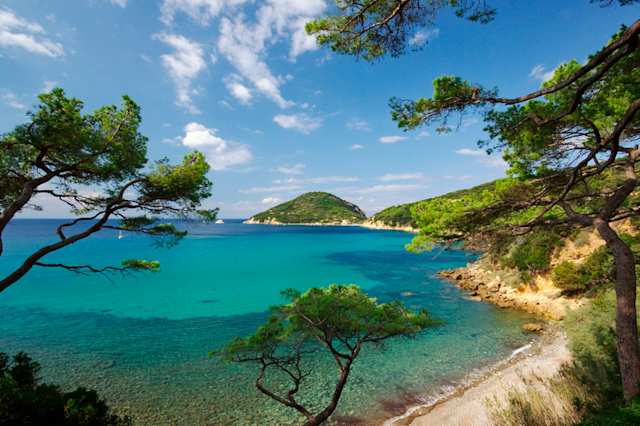
Turquoise water and shoreline of Elba island, Tuscany
Given the beauty of the interior of Tuscany, you’d be forgiven for brushing over the fact that the region also boasts of some magnificent coastline. Take the island of Elba, for example. Nestled in the Tyrrhenian Sea’s Tuscan Archipelago National Park, it’s best known for some of Italy’s prettiest beaches. With this comes the guarantee of a perfect seaside holiday – lounge all day on golden sands, gorge on some of the freshest seafood in Europe and get your toes wet with scuba diving and snorkelling expeditions.
At 29 kilometres long, there are plenty of great places to stay. Sprawling out on a headland surrounded by the sea, Portoferraio is the island’s largest city and a marvel to look at with its towering cliffs and three forts protecting a quintessential Italian harbourfront. Meanwhile, we think Marciana Marina is most certainly one of the prettiest towns not just in Elba but all of Tuscany. If you really want to get away from it all, how about Marciana Alta? The island’s highest town is a labyrinth of winding alleys and pretty squares, only accessible by foot.
Lucca
Sticking with a pedestrian-friendly theme for a moment, check out Lucca back on the mainland. Commonly known as ‘the city of 100 churches’ the historical town centre is of particular interest with its ornate churches, rustic cobblestone streets, Roman ruins and Renaissance walls – all the Tuscany checklist items in spades, basically. We’re particular fans of the walls because they’ve effectively become a park that surrounds the heart of the city, thanks to all the grass and trees that have sprung up and been maintained. It means you can take a stroll or enjoy a bike ride right around the entire perimeter. The location is great too; it's just a short train ride from both Pisa and Florence.
For first-time visitors, it seems logical to stay in the historical centre, within walking distance of all the popular tourist sites (including the Lucca Cathedral, Guinigi Tower and Piazza dell’Anfiteatro) as well as the train station.
Siena
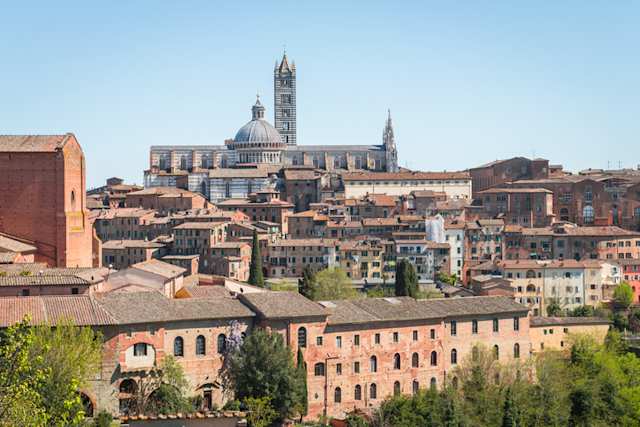
View of the Duomo di Siena over the rooftops, Tuscany
Where to stay in Tuscany? Well, if it’s good enough for Bond, it’s good enough for us. Featured in Quantum of Solace, Siena is a stunning town made unique by its distinct medieval brick buildings, of which there are many. It’s actually probably for the best that you don’t roll up in your Aston Martin DBS, as the majority of streets are rather narrow and winding – a really charming feature of the town that’s best explored by foot. Notable buildings include the Duomo Di Siena (one of Italy’s premier pieces of Gothic architecture) and the Torre del Mangia – a slender, 14th-century tower offering gorgeous views out across the whole town. It’s only 200 steps up to the top.
Spread out from the Piazza Del Campo (the main town square), there are 17 districts to choose from. You can keep it easy by staying central in Torre, named after the tower. Alternatively, Aquila has plenty of nightlife on offer while still remaining within walking distance of the centre, and Onda remains popular with tourists, boasting plenty of lively bars, souvenir shops and trattoria. If you’re looking for a more local, authentic vibe, try Lupa, which is mostly residential.
